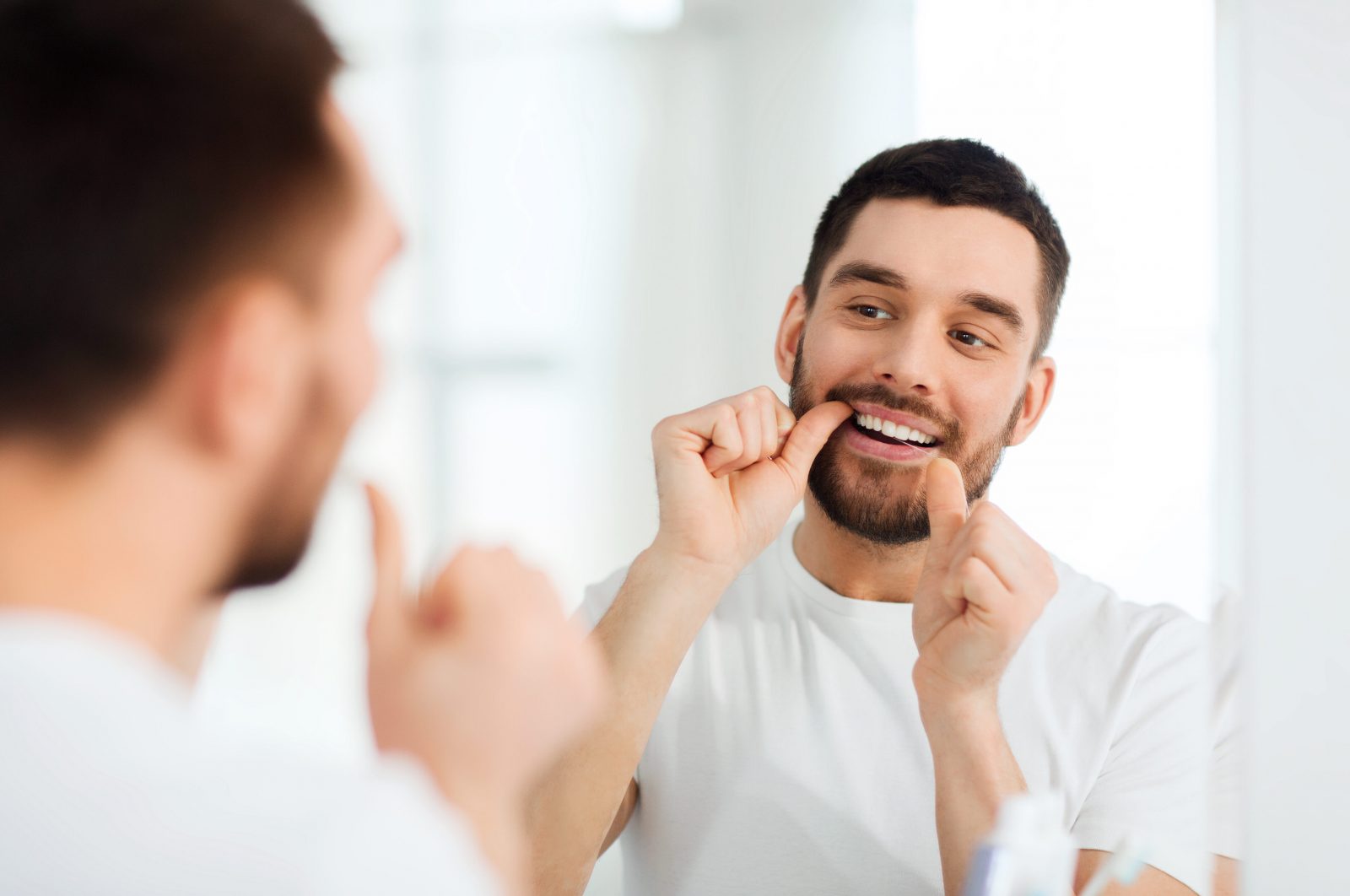 Photo Credit: Shutterstock
Photo Credit: Shutterstock
When you go to the dentist, what is the one thing they always tell you to do? Floss, floss, and floss. Experts place an emphasis on flossing as well as brushing your teeth daily to keep bacteria under control. Without proper oral hygiene, we might experience tooth decay, gum diseases and cavities. For all the non-flossers and flossers, Haute Beauty sat down with Haute Beauty Experts to learn if flossing is the only way to keep your gums healthy and if there are any foods that can aid in the health of your teeth. Here is what they had to say:
Dr. Mimi Yeung | Smile | New York
Flossing is the best home care technique in warding off periodontal disease. However, if flossing is a challenge or you don’t have the manual dexterity to do so, you can try:
- Saltwater rinse 3 times a day
- Taking at least 300 MG of omega 3 fatty acids reduced gum inflammation
- Chewing peppermint leaves, the oil has antibacterial values
- Drinking green tea promotes overall health
Keep in mind, these suggestions have maintenance value only. If you have moderate to severe disease, it is prudent to remove any and all disease-causing factors for best results.
For more information, visit Dr. Yeung’s website, Instagram, or Facebook!
Dr. Michelle Luis | Smile Expert | North Miami
Flossing is always king! It is the only way to really reach those spaces deep in between your teeth. However, using a water flosser is also very helpful. It is a way to “warm-up,” your gums. I use the analogy of wanting to run a mile, but you do not usually run. So if you do not usually floss, and you wanted to start, then I would recommend starting with a water flosser. A water flosser is like walking a mile before running. It allows for your gums to become less inflamed, which will make using the string floss more comfortable.This will also prevent getting discouraged by the discomfort of flossing, which will get you motivated to continue.
Stay away from the floss sticks. They do not “hug” the teeth enough to get down far enough in the gums where most of the food and bacteria sit. Floss sticks are only helpful when used as an alternative to a toothpick, to remove bigger pieces of food after a meal.
On a more fun dental note, there are foods that naturally brush your teeth. Hard cheeses and apples are my go-to foods. Personally, Manchego cheese is my favorite so I use the excuse to eat more of it because it is naturally brushing your teeth! The texture of these foods will act as a toothbrush and will help remove the film that builds on our teeth every day. This is not a substitute for using your toothbrush and your string floss!
For more information, visit Dr. Michelle Luis’s website, Instagram, or Facebook!
Dr. Brittany Dickinson | Smile | Chicago
A trip to the dental office wouldn’t be complete without being told to floss more… flossing definitely helps to keep your gums healthy, but there are several other ways to keep your gums healthy, pink and pain-free!
1. An electric toothbrush. The Sonicare toothbrush is my absolute favorite electric toothbrush available. Personally, I’ve used one since I was a child, and clinically, my patients that use them have the healthiest gums! The bristles move at a rate of 300 times per second. This is way more than you can do with a manual toothbrush. This helps both to remove plaque along the gumline as well as to massage and stimulate blood flow to the area which keeps them healthy!
2. Fibrous Foods. Some foods are natural tooth scrubbers. Apples and celery are tougher fibrous foods that are able to scrub away bacteria and plaque from your teeth, keeping your gums healthy. As an added bonus, they also scrub away surface stains and can act as natural tooth whiteners! With how busy we all are now, of course, we love anything that does double-duty!
3. Ginger. Incorporating ginger tea into your daily routine can do wonders for your gums. Ginger has been shown to inhibit bacterial growth in the mouth, which can help keep your gums healthy! Fewer bacteria means less inflammation and less pain. Now that’s something that will help everyone’s mouth!
For more information, visit Dr. Dickinson’s website, Instagram, or Facebook!
For more information, visit Dr. Brian A. Levine's social media:

























